The process of filmmaking is a thrilling yet rigorous process that requires creativity, storytelling skills, and technical prowess. It is also a collaborative endeavor that requires various moving parts to come together to bring creative ideas to life.
In this beginner’s guide, Phantom Filmmaker will delve into the 5 crucial stages of film production. We aim to highlight these five steps to give you insight into the different stages involved in creating a film.
What is film production?
Film production is the process of creating a film throughout its different filmmaking stages, from its conceptualization to mass distribution. This process involves various steps, largely called the filmmaking stages, which must be followed properly to ensure a successful production.
Stage 1: Development
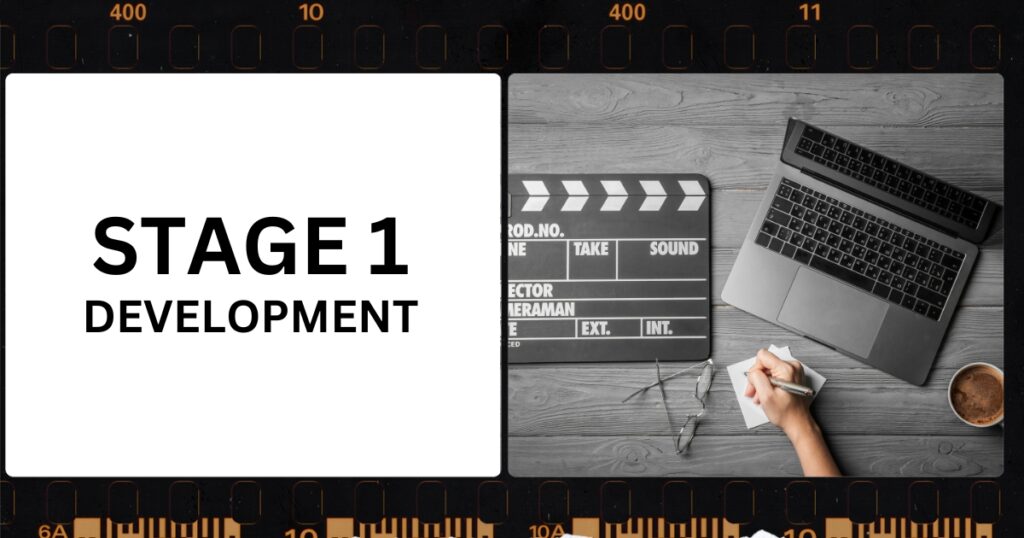
The most crucial stage of film production is the development of a concept. This is where the creative vision of the film is made and it must first be completed before you can move to the next film production stages.
When it comes to a film’s development, there are various aspects for you to consider, such as:
Conceptualization
To begin the first of five film production phases, you must first undergo the process of idea generation. You must first come up with a unique and interesting concept for the film you want to make. This idea can be inspired by literature, personal experiences, real-life historical events, or completely original concepts.
Developing the screenplay
With a clear film concept in mind, it’s time to start writing the screenplay. Screenwriters will now turn the initial idea into a fully functioning script that involves the story’s structure, character arcs, dialogue, and overall flow of the story.
This is a crucial step in film development because the entire filmmaking process will rely on the screenplay throughout the entire production. That’s why it’s crucial to develop a screenplay that is intriguing and marketable this early in the development.
Financing the film
This step in the first stage is possibly one of the most difficult, especially if you’re new in the industry. This is the process where you will explore avenues for funding your project. This includes pitching your script to production companies, applying for production grants, or seeking interested investors.
Stage 2: Film pre-production
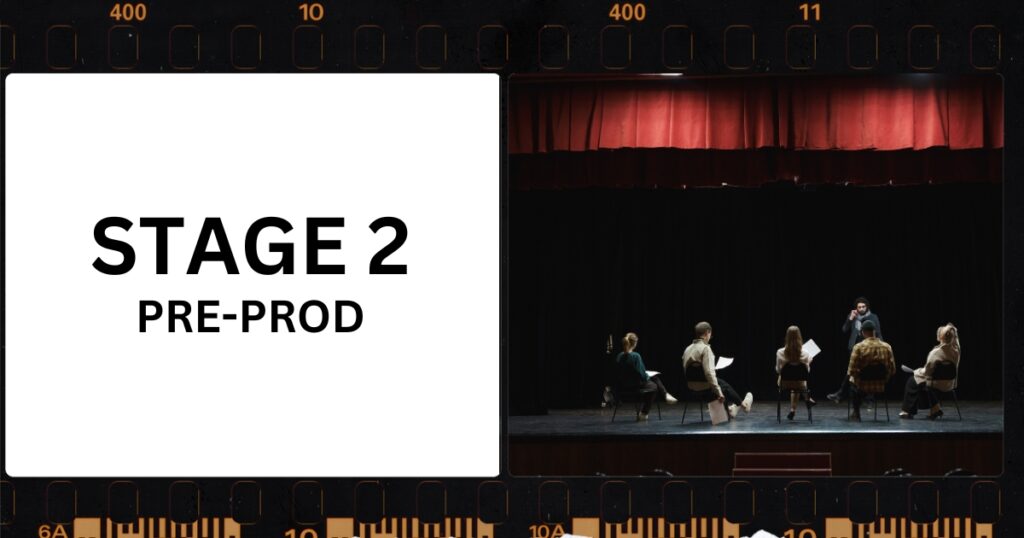
Once you’ve fully developed your script and secured funding, you can begin the process of pre-production. In this stage, your focus is to prepare everything necessary to ensure a smooth production in the future. This requires detailed planning and organization before the film shoot begins.
Since there are many departments involved in this process – such as the camera and lighting department, sound department, art department, and more – there are many factors to consider during this stage, including:
Crew hiring
When creating a film, you want to ensure that you have the best ensemble of skilled professionals to make it happen. That’s why it’s important to secure crew contracts early in the pre-production process, so make sure to hire the crew you think will best help create the film of your dreams.
Some of the crew you need to hire early on include the director of photography, production designer, costume designer, production assistant, and other technical crew members.
Script breakdown
After you’ve secured your core crewmates, it’s important to invite them all to a pre-production meeting to go over the script known as the ‘script breakdown’. This will give you all the chance to get aligned with the artistic goals and messaging of the film.
Scouting locations
Location scouting is the process of finding the right sets for your film. This is a rigorous process and requires a lot of time, especially if your script has specific location requirements. Additionally, it’s important to ensure the right location is found to ensure the desired environment or atmosphere of the film.
Storyboarding
Storyboarding is a crucial process that many new filmmakers overlook. This is the process of translating your script into a visual format to help guide the film’s vision. This helps all the key members of the crew understand the director’s desired look for the film.
In that sense, the production becomes easier since everyone has the storyboard to refer to when looking for guidance on how to set things up for production.
Casting
During pre-production, the casting crew and the director will also hold auditions to find the cast who will embody the characters in the script. As such, casting calls will be made and auditions will be scheduled for those who are deemed right for the role.
Stage 3: Production
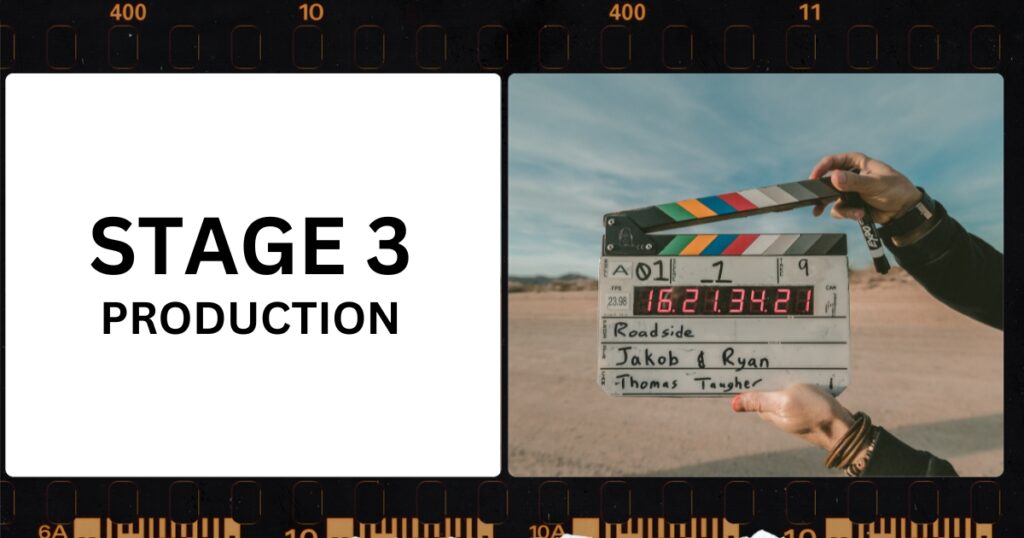
The production stage is the culmination of all the preparation done during the second of five movie production stages. During this process, it’s crucial to follow the schedule and plans made during the pre-production to avoid unnecessary complications.
During the production, the key processes you need to know are:
Production design
Before the filming starts, the art department will begin setting up the filming area. They’ll dress up the set according to the agreed-upon concept and make sure that the production design matches the film’s aesthetic.
Cinematography
The camera and lighting crew will also be set up before filming. While doing so, they’ll select camera angles, and the right framing of a shot, and conduct the necessary lighting techniques for the film.
Wardrobe, Hair, and Make-up
While the set is being prepared and the camera and lighting equipment are being set up, the cast should also be preparing. That means they need to get into their assigned wardrobe and then proceed to hair and make-up.
Sound production
Once everyone is on the set, the sound crew will then set up the sound equipment. That means finding the right spot for the boom operator. When using lapels, the sound operators will also put on the lapel mic on the cast, all the while ensuring that they’re hidden from the camera.
Directing
Before the filming begins, the director will guide the actors and crew in what they want to get out of the scene. They’ll be responsible for character blocking, correcting performances, and the overall visual outcome of a take. Their role is to make sure the scene will match the overall narrative and that it’s aligned with the creative vision.
Stage 4: Post-production
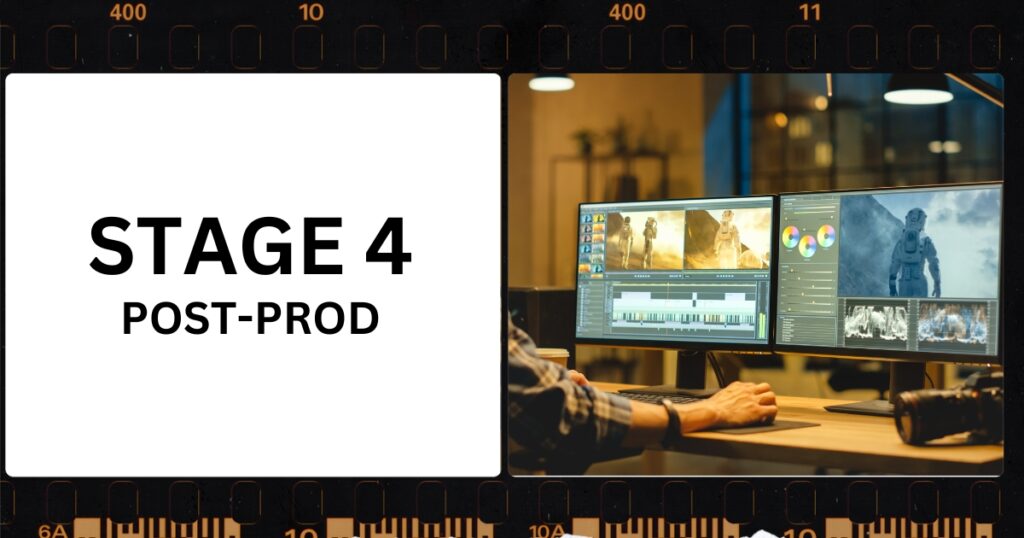
The post-production process is where all the visual and sound elements of the film come together. This is the process where all the footage is edited and refined to match the narrative. The steps to make this possible include:
Video editing
The video editing is the first step in the post-production process. The video editor will compile all the right footage and lay it out according to the script’s sequence. They’re responsible for dictating the pacing, timing, and overall flow of all the scenes.
Color grading
Once the director is pleased with the editing of the film, the next step is to color grade the film. This is the stage where the film’s color and tone are adjusted to make it consistent and appealing. Additionally, this process enhances the mood and ensures all the footage matches the aesthetic of the film.
Sound design
Once the visual aspects of the film are polished, it’s time to focus on the auditory aspects. The first step in this is doing the sound design which is focused on ensuring all the sound effects, ambient sounds, and foley effects are included in the film.
Music Composition
Following the sound design, the next step is to add the score or soundtrack to complete the film. This can mean adding original music or a pre-existing score that matches the tone of the film.
Final cut
After the film is completed, it will be viewed by the key film crew such as producers and the directors. In most cases, it will also undergo test screening to gauge audience reactions. Once those steps have been taken, the necessary changes are made to the film according to the audience’s response.
Stage 5: Distribution
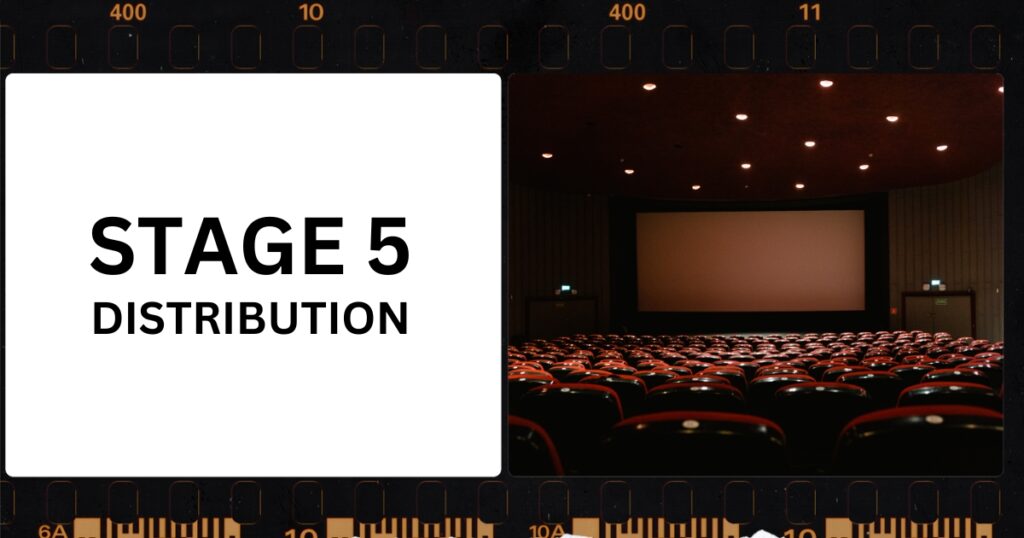
Once the film is finalized and ready for public consumption, it’s time to plan its distribution. During this phase, you’ll need to plan out a strategy to ensure your film is well-received by its target audience. As such, you’ll need to consider the following:
Marketing
Before releasing the film, you need to first announce it to your target audience and develop an interest in the film. This can include releasing trailers, posters, press releases, cast interviews, and social media campaigns. When doing this, make sure to highlight the schedule of release and where the film is available for viewing.
Theatrical release
If the film is intended for theatrical release, then it’s important to find a distribution company to secure screenings. It’s important to heighten your marketing efforts when releasing at the cinema to maximize your chances of driving audiences to the theatre.
Film festivals
If the ultimate goal of the film is to submit it to film festivals, then you need to submit it to the relevant festivals so it can compete and be shown to a wider audience.
Digital distribution
Nowadays, with the rise of streaming platforms, it’s important to consider publishing your film online. Consider the right digital channels and partner with the right streaming platforms to ensure your film is accessible to the global audience.
FAQs
Why is pre-production important in filmmaking?
The pre-production stage is crucial in filmmaking because it involves thorough planning and organization before the production occurs. In essence, it lays the groundwork for an efficient filming process that includes making key decisions on the creative, technical, and financial aspects of filmmaking.
Who creates the schedule for the film production?
When it comes to scheduling, the Assistant Director (AD) takes point while collaborating with the director and key department heads. Thor’s goal is to determine the sequence of scenes, and the time requirement for each department, and create a timeline for the shoot.
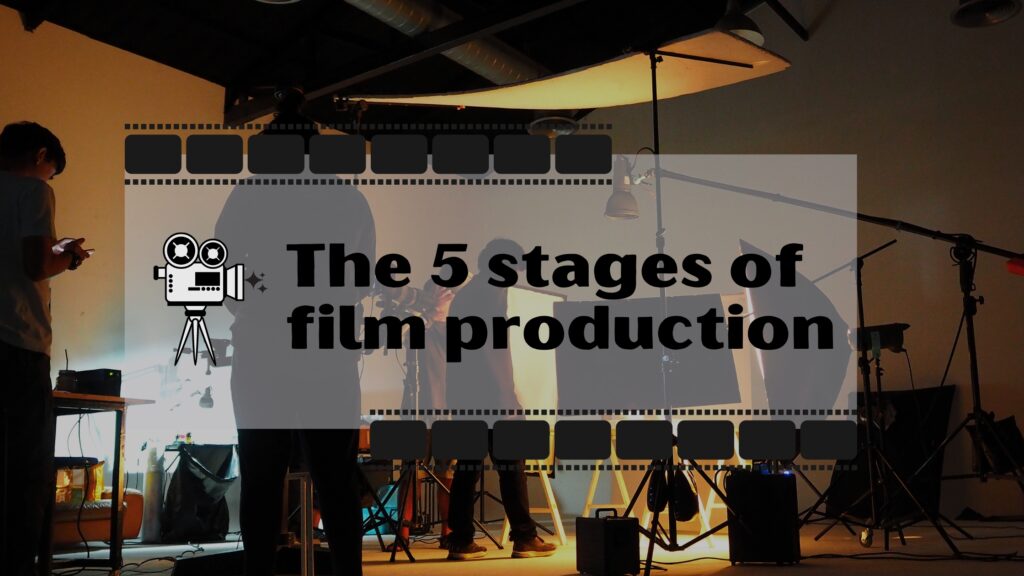
For further reading
Do you need to go to a film school?
Film production design: Crafting the best visual aesthetics
Film script writing: How to write a compelling movie screenplay